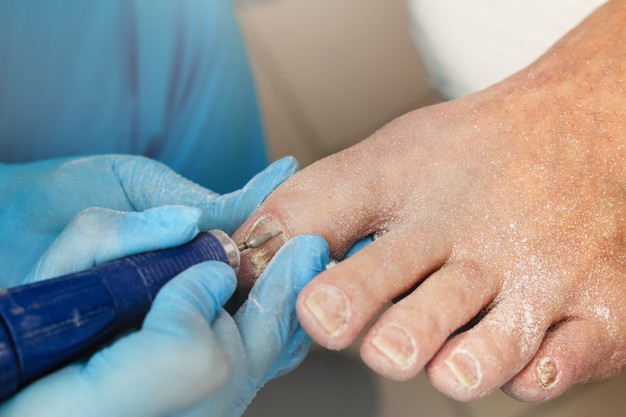What is Bunion? When you need a Bunion Surgery
How do I know if Bunion Surgery is a Good Idea?
Bunion surgery often referred to as bunionectomy, is a procedure to fix bunions. There are several kinds that bunion surgical procedures. The majority of them involve repositioning the big foot in order to ease pain and increase functionality.
A Bunion is What it Sounds Like?
A bunion, also known as hallux valgus is a bony bump that is located on the right side of the joint between your big and little toes. The bumps develop along the outside of your foot. They can be seen in that joint in which the foot is joined to the foot, referred to as the metatarsophalangeal (MTP) joint.
What are the Different Types that Bunion Surgeries can be Performed?
Your surgeon may use a few different techniques during your bunion surgery, including:
- Exostectomy In this procedure the surgeon cuts off the bunion. In many cases, doctors use this technique in conjunction with osteotomy in order to adjust the toe. The procedure is seldom performed and is only performed in the case of minor bunions.
- OsteotomyYour doctor makes few tiny incisions inside the bones. The surgeon will then use pins or screws to realign the large toe joint. It is by far the most frequently used procedure for bunions.
- ArthrodesisSometimes the inflammation of arthritis may cause bunions. When you have arthrodesis joint fusion your surgeon can remove any areas in the joint of the toe that are suffering from arthritis. The surgeon will then place screws into the toe joint for the purpose of holding the bones together as they heal. This procedure is only carried out by a specialist who has the highest severity of bunions.
Who is Eligible for Bunion Surgery?
Most of the time, you’ll only require surgery when the bunion is painful or is causing functional issues. You could qualify for bunion surgery in the event that you are suffering from:
- The big toe is a long one that dangles towards those smaller feet.
- Hallux rigidus or a big toe that is stiff.
- It is a pain that can hinder your everyday activities.
- The swelling and inflammation of the big toe, which doesn’t disappear.
What Happens Prior to Bunion Surgery?
Before your surgery you and your surgeon are going to discuss health issues, exercise levels and any other variables which could impact the recovery process. Your surgeon will utilize this information to select the most suitable type of procedure for you. When you are scheduled for an appointment with your physician will request that you arrive at least two hours earlier. In general, surgeons conduct bunion surgery using local anesthesia (numbing substance that is placed in the area of the foot) along with an anesthesia that is monitored and light which will ensure your comfort throughout the procedure. In most cases, intubation (breathing tube), as well as a high dose of anesthesia, are not required for this kind of procedure.
What Happens During Bunion Surgery?
In most bunion surgery, your surgeon will make a small cut along the joint of your big toe. Your surgeon then repositions your toe’s big one. Your surgeon could be able to realign the tendons or ligaments that surround your toe joint.
Most of the time, your doctor places your toe with:
- Metal plates.
- Small screws.
- Wires.
The surgeon will place bandages and stitches on your toes in order in order to allow the area to heal in a proper way. The entire process can last between 45 minutes and 3 hours, depending upon the extent of bunion and the procedure that needs to be done to correct it.
What Happens After Bunion Surgery?
Surgery for Bunion is an outpatient process which means you are able to return to your home the next day. Following surgery, you’ll remain in a hospital recovery room for between one and two hours until the surgeon has determined that it is safe to go home. You’ll have to ask for someone to transport you back home. In the course of your recovery at your home, your doctor will direct you to:
- Do not put too much the weight of your big toe.
- Lift your foot to decrease swelling.
- Make sure that your bandages and wounds stay dry.
- Use pain medications as directed. (Antibiotics will rarely be needed during this kind of operation outside of an operating room.)
In the first 2 weeks following surgery, it is possible that it is possible to need someone to assist you in preparing meals or help with chores around the house.
RISKS / BENEFITS
What are the Benefits Associated with Bunion Surgical Procedures?
Many people who undergo surgery to treat bunion suffer substantial relief from pain after they heal. The surgery can also improve the alignment of the big toe. Achieving better alignment for your big toe will help you walk more comfortably.
What are the Potential Risks or Complications Associated With Bunion Surgery?
The potential risks of bunion surgery comprise:
- Bunion Recurrence (coming again).
- Incessant pain or stiffness.
- The inflammation or infection can be caused by an illness.
- Nerve damage.
- Wound-healing problems.
Your doctor will go over the risks associated with surgery for bunion with you. Bunion surgery complications are very rare and generally easy to treat. If you do encounter any complications, your healing may take longer than anticipated.
RECOVERY AND OUTLOOK
What is the Estimated Time for Recovery?
Typically, you’ll have the stitches removed about two weeks following surgery. It can take 6 to 12 weeks to recover your bone. You’ll likely need to wear a shoe or boot.
During this time of healing it is possible that you will not be in a position to put all you weight onto your feet. In order to move with ease you might need to utilize crutches, a wheelchair or walking aid. The weight bearing capacity will be determined by the type of procedure taking place to correct the bunion.
In the space of six or 12 weeks you’ll begin to see improvement in the function of your feet. Certain exercises in physical therapy aid in restoring the strength of your feet and increase the mobility. It is possible to resume activities after three months. However, swelling could persist for six to nine months following surgery.
To make sure you heal your feet in a timely manner You will have to consult your doctor to schedule a pre-scheduled post-op visit after the surgery.
WHEN TO CALL THE DOCTOR
When should I consult my physician regarding an unintentional bunion?
Also read: How Does Foot Surgeon Remove Wart?
Consult a Podiatrist when your bunion is causing pain or is preventing you from walking. Bunion surgery can help those with painful bunions get active.
ADDITIONAL DETAILS
How Can I Stop Bunions From Resurfacing Following Surgery?
If you have had bunion surgery you are able to make steps to stop bunions from returning. One of the main causes of bunions is snug-fitting shoes. Be conscious that reverting to an overly tight shoe can result in bunions returning.
An orthotic can also aid in preventing recurrence in cases where the reason for the bunion initially was an overpronated (flatter) kind of foot.
It could also be beneficial in cases where you suspect that equinus (tight muscles of the calf) is the root of the bunion.
A Note from the Cleveland Clinic
Your doctor may suggest bunion surgery in Perth for you if you suffer from uncomfortable, bumps on your bones referred to as bunions. The procedure of removing bunions will reduce pain and help you recover your foot’s functionality. The majority of people who undergo bunion surgery recover well. They can return to their normal activities within six to twelve weeks.




